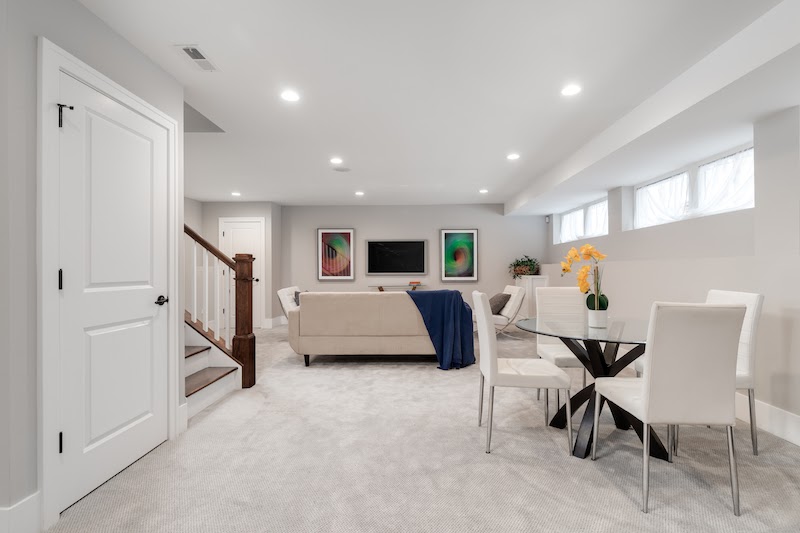HomeStars connected with Captain Roman Wojnarski, Community Risk Reduction, of Toronto Fire Services to learn important information about building an income suite in your home. Be sure to read all of Captain Wojnarski’s tips before you start planning your renovation.
Big house? Empty nester? Many homeowners have their reasons for turning a portion of their home into an income generator. Before you start thinking about what to do with all that extra cash or make a list of materials to buy from your local Home Depot, take a serious look at both the practicality and feasibility of this important decision! A knock on the door from a local Building or Fire Department Inspector may send a shockwave of anxiety into your system (like getting caught cheating on an exam) followed by a swelling of regret. Experience has shown many well-intentioned homeowners didn’t think things through and started funding a major renovation without taking the time to review the rules and regulations about making these changes.
You see, the home you live in is in all likelihood a “single-family dwelling.” That’s how the structure was conceived, designed, approved, and built. Even though it’s your “castle” there are certain aspects of it that cannot be modified, altered, added on to, or taken away from, that is, without the proper applications, reviews, and approvals. The local municipality is going to have a say in how you alter your home and making a portion of it into an income (rent out a basement apartment or number of rooms) space may raise some flags if you don’t do your homework ahead of time.
Firstly, any change of use to your home (for example, building a basement apartment in a “single-family dwelling”) will require a BUILDING PERMIT. The scope of the permit (permit application) will be described in detail to the local City Building Department, including where and what your building looks like now and how it is proposed to be altered. In many cases, a qualified Designer or Architect is the best resource to begin with and will often make these applications on your behalf. This process assures the city, you, your neighbours, and future tenants, that the requirements of the ONTARIO BUILDING CODE are being met. This includes the many safety (including fire safety!) measures that are prescribed by law and intended for the well-being of all occupants. Generally, compliance with the Ontario Building Code will include requirements under the Ontario Fire Code, especially for things like the installation of smoke and carbon monoxide alarms.
But the Ontario Fire Code (a regulation under the Fire Protection and Prevention Act, considered a companion document to the Building Code) has its own set of rules in terms of life-safety in existing buildings including alterations of same that have been made years before. Part 9 (RETROFIT) of the Fire Code defines the minimum performance requirements for life safety in existing buildings. This includes everything to do with containment (constructing or enhancing fire separations between spaces), means of egress (number of code-compliant exits or ways out of a unit or floor area), fire alarm and detection (smoke alarm requirements and possible interconnection of same), among other things. Failure to comply with this regulation can result in charges being laid and ultimately potential hefty fines!
As mentioned, basement apartments are one of the most common types of additions (existing basement units are subject to Section 9.8 of the Fire Code). The requirements for such can vary depending on layout, but commonly pertain to proper fire separation between units, possible fire separation of a furnace room, and installation of ULC listed 20-min fire protection rated doors with self-closing and latching devices. Some municipalities may have further requirements for things such as ceiling heights, provisions for parking, etc. One thing that is ALWAYS a must is the installation of SMOKE ALARMS! These alarms are required on every floor or storey; on floor areas with bedrooms they must be located on the ceiling of the hallway serving the bedrooms. Carbon monoxide alarms are also needed anytime there is a fuel fired appliance (gas appliances being the most common), or when an adjacent wall, floor, or ceiling is shared with the same, or even if there is a parking garage on the other side. One of the most convenient options available to consumers is the combination smoke and carbon monoxide alarm (with 10-year maintenance free battery) which can simply be installed on each floor area and in each hallway serving bedrooms of a house for optimal protection!
It will come as no surprise that residential dwelling units (however configured) are the leading types of occupancies in terms of fire frequency and fire fatalities. PREVENTION, DETECTION, ESCAPE! That’s the message behind all the Public Education efforts that municipal fire services across this province endeavour to get across to the public. Even the best housekeeping, and regular maintenance of smoke alarms or fire doors are incomplete without an ESCAPE PLAN. Every occupant in the house must know what to do and where to go in the event of a fire or if an alarm in the home activates. Home escape plans are a crucial part of every household emergency plan and there is no shortage of resources available online to help with this. Toronto.ca/fire is a great starting place as is the Office of the Fire Marshal and Emergency Management. Check with your local Fire Service to see all the resources available to you. Remember also, careless and unattended cooking remains the leading cause of residential fires and careless smoking remains the leading cause of fire fatalities.
Investing in a portion of your home to generate rental income can bring great returns. But remember to invest in life-safety first! Go through your local municipality to ensure you are conforming to all provincial and local requirements. The safety and well-being of your tenants and family members is the best dividend of all.
